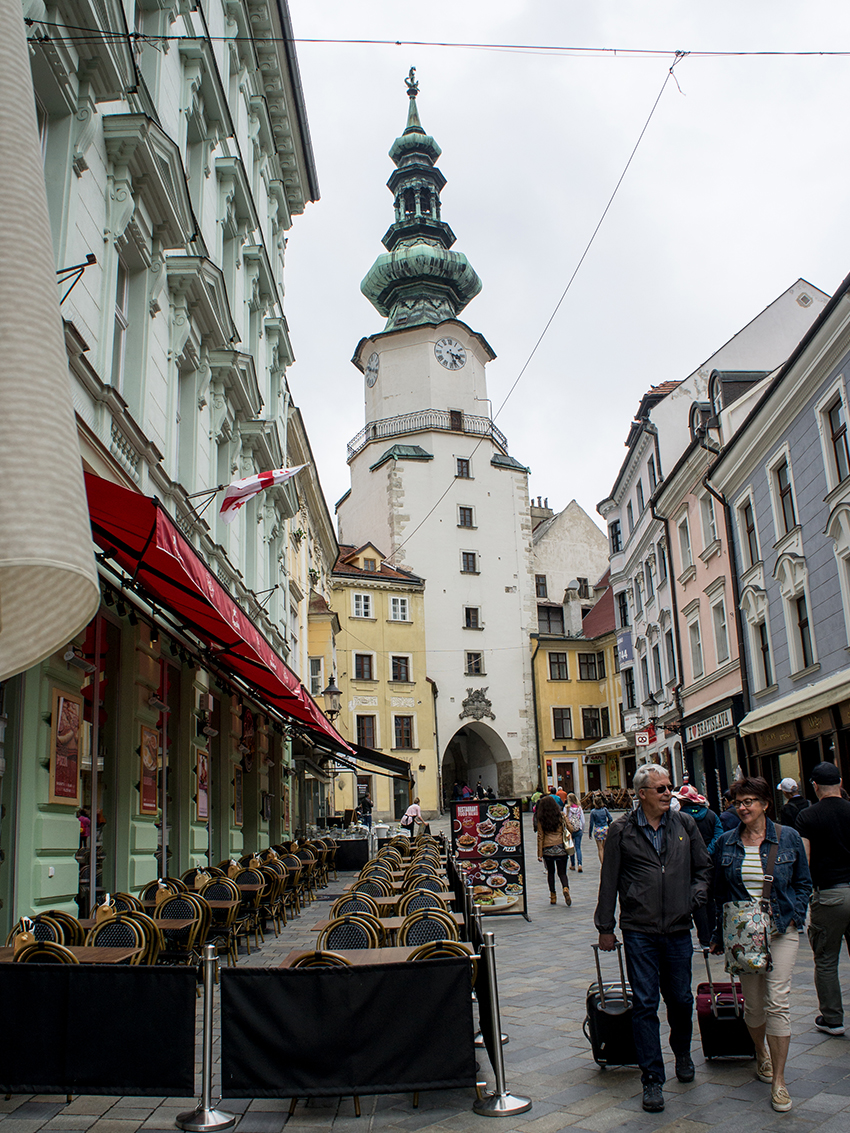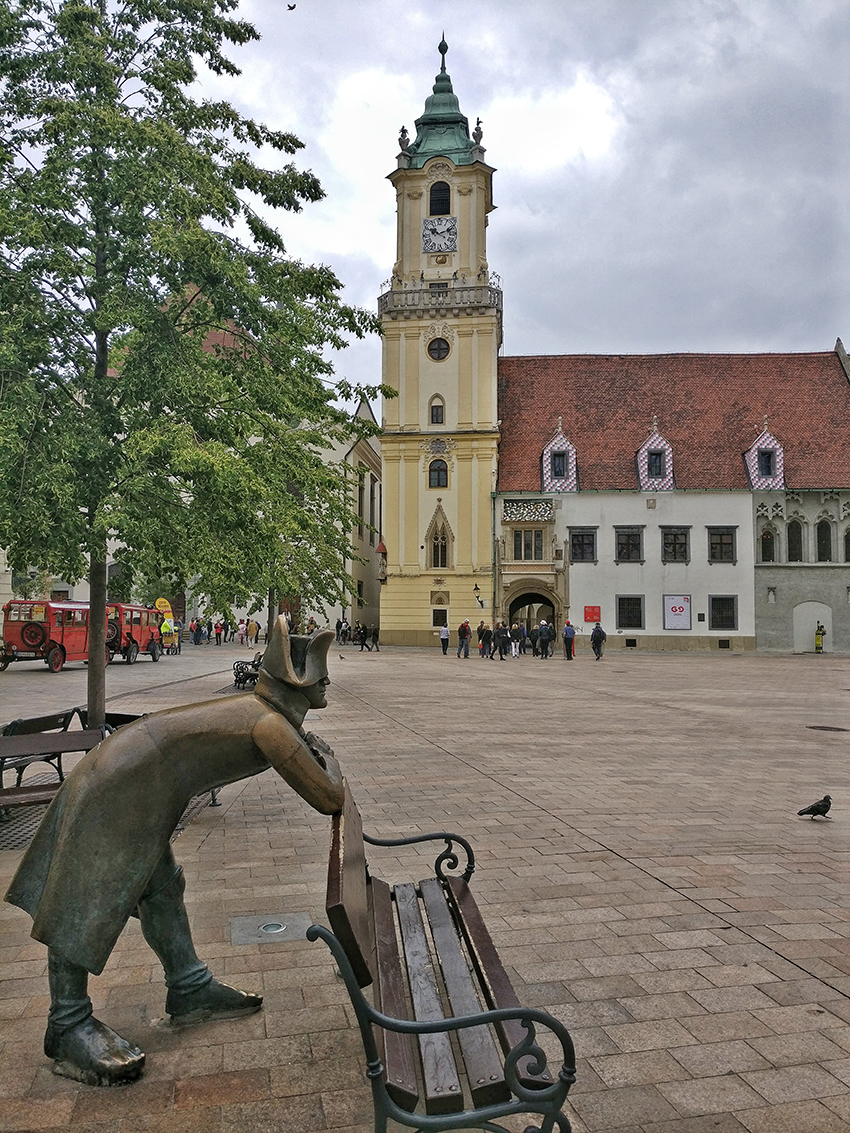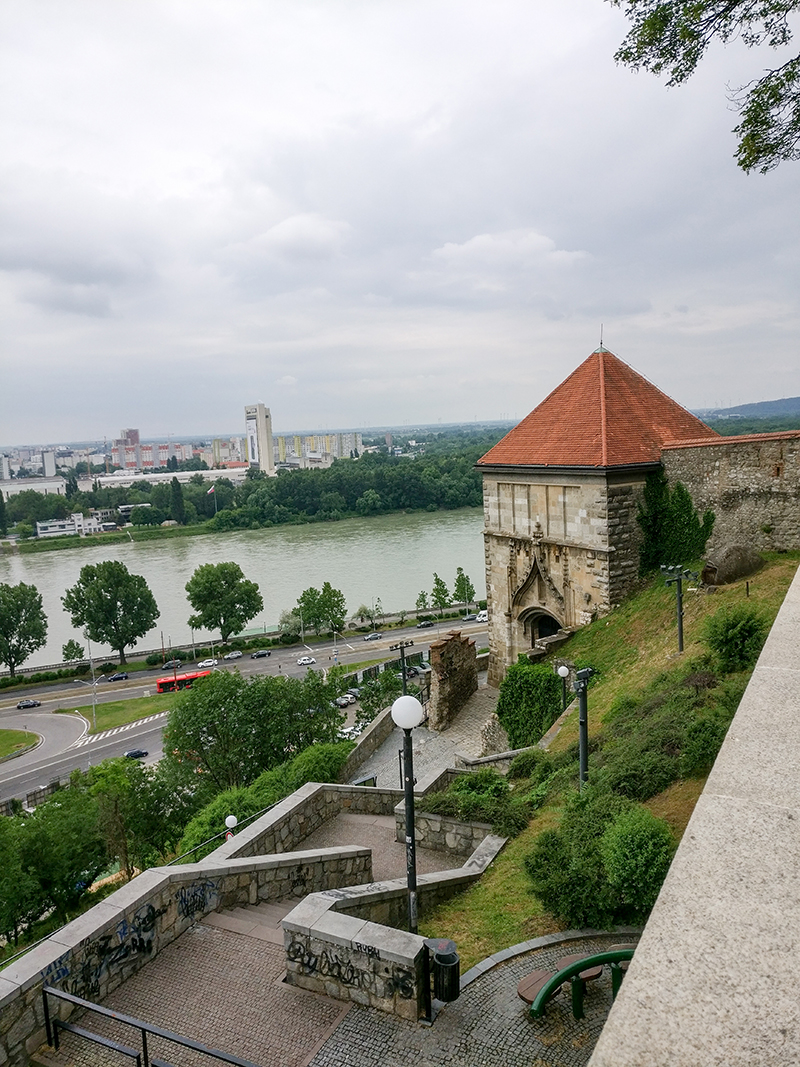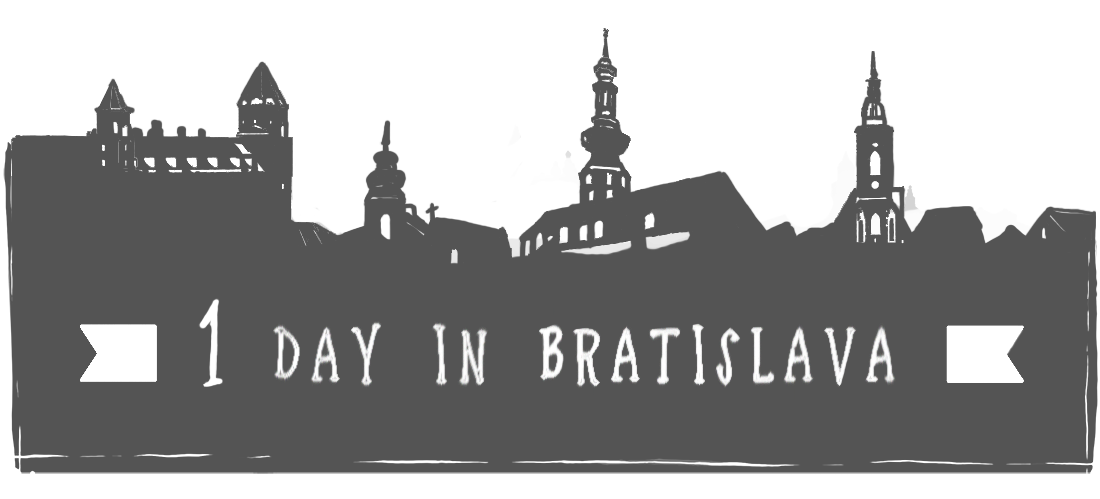
The first stage of our visit to the city of Bratislava is the Grassalkovich palace, presidential residence, and his square, where you can admire a fountain with a sphere in the center representing the Earth.
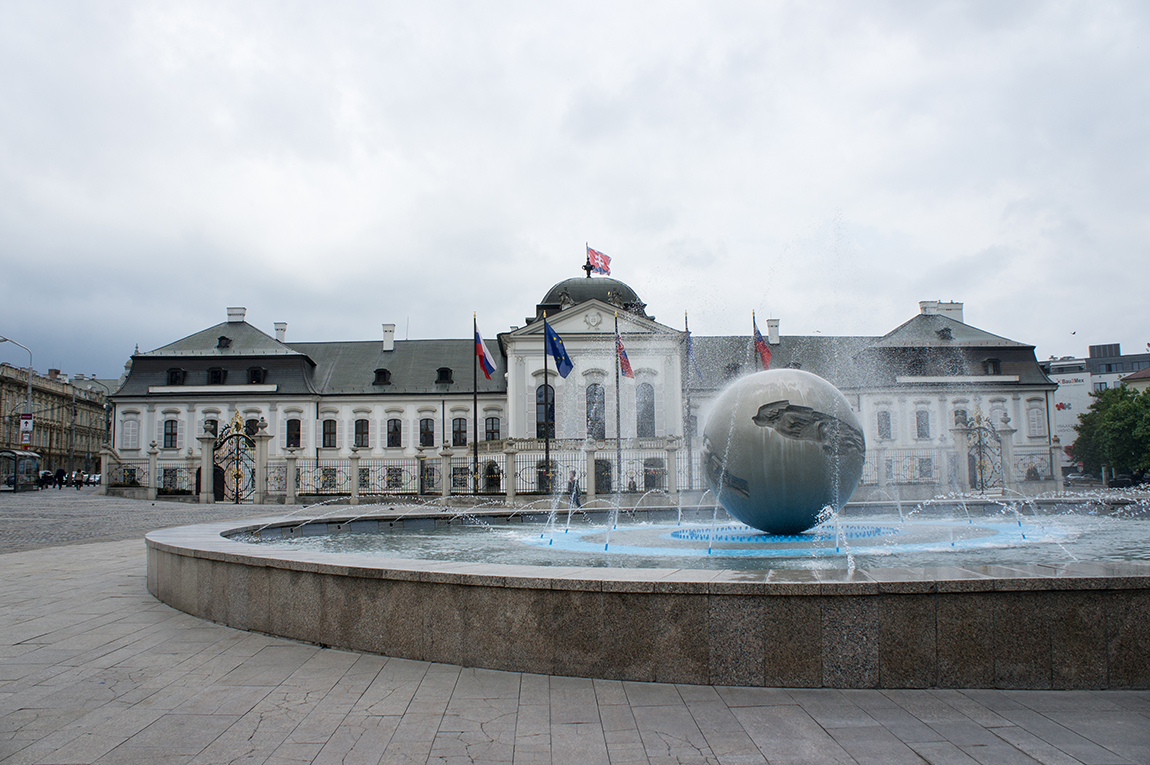
Continuing towards the center, we crossed Postova street, an alley full of small shops where you can find the statue “Postova”, one of many statues-attraction of the Slovak capital. Not far away you will see the tower-gate of S. Michael, the only remaining passage of the fortified walls of the ancient Pressburg. Although today there is a fixed bridge to cross the door, you can still see on the outer walls the cracks from which passed the ties that hoisted and lowered the drawbridge, and below, the ancient moat is now a green area where to sit at the tables of a bar and watch some artists perform.
Continuing along the main street, you will find yourself in Hlavnè Namestie, the main square of the city, home to the old town hall, the fountain of Massimiliano I and some famous statues, including the much photographed “Cumil”. Do not miss the Primates’ Palace and its fountain, which represents San Giorgio and the dragon. Another square worthy of mention is Hviezdoslavovo Namestie, a long and narrow square surrounded on the sides by hotels and restaurants, as well as home to the old city theater, but also a statue (yet another) of the writer Andersen. At the bottom, near the Saint Trinity column, you will see the ramp of the New Bridge, famous for its disk (nicknamed Ufo) which houses a restaurant and a skybar from which you can see all Bratislava. In the opposite direction from the bridge, you will find the cathedral of St. Martin, the place where the kings of Hungary were crowned. Nearby the ancient walls of the old city from which you can reach one of the elevated passages that connects with the other side of the old city.
Here you can admire the house of the “Good Shepherd”. The house, in rococo style, was owned by a merchant who carried out his activity in the lower part of the building, while living on the upper floors. Today it is home to the clock museum (entrance fee 2.50 euros). It is one of the few buildings under the castle area to maintain its original appearance, due to the destruction of the old Jewish quarter, implemented under the communist reggime, to allow the construction of the new bridge. Start from here the ascent towards the castle, from which you can admire the panorama of the city and the Danube river. Going down we stopped to observe the Capuchin Church and Monastery and then we headed to the very popular “Blue Church”.
Change Language:
ABOUT US

Hello! We are Raffaella and Simone, a couple in life as well as in travel, and the two souls behind Shortcut to.

Hello! We are Raffaella and Simone, a couple in life as well as in travel, and the two souls behind Shortcut to.
Engaged in a long distance relationship, we have spent many weekends milling miles from west to east (or vice versa) between trains, coincidences, suitcases to do and to unpack. Travel has always been in our destiny.
In May 2012 we travel for the first time together outside the national borders, the destination is London. Since then, whenever we can, we book a flight and leave for the next destination.
With our blog we want to encourage some traveler-dreamer, those who travel only sitting on the couch scrolling instagram, saying to themselves “this is not for me, I can not afford it “, to change your mind and leave. Our travels aren’t appearance, our photos are amateur and our budget is tight. If we can do it why can’t you?
If you like art and to visit museums, if you want advice on attractions or you want to visit as much as possible but you don’t know how to organize everything, if you want to know some economic alternatives on where to stay, eat or how to move around the city, our “shortcut” may be useful for you too!
Have a look and enjoy!


